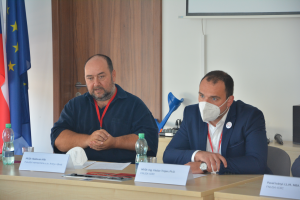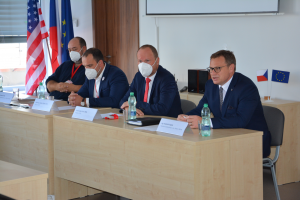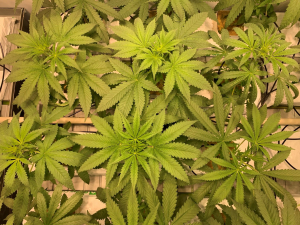The hospital launched a cannabis cultivation facility
The St. Anne’s University Hospital Brno has launched a trial run of its own experimental cannabis cultivation facility. It has become the first medical facility in the Czech Republic to grow medicinal cannabis. For the time being for research purposes.
St. Anne’s University Hospital Brno (FNUSA) is the leading Czech institution in the development and use of medical cannabis treatment. “We use it at our department for pain treatment. It also has indications for the treatment of many problems in other medical fields. In general, cannabis treatment raises a number of unanswered questions, yet it meets the requirements for high safety breadth. For further development of treatment and understanding of the effects, we want to follow up the clinical practice with research,” said Radovan Hřib, MD, Head of the Pain Management Centre of the Anaesthesiology and Resuscitation Clinic of FNUSA and the Faculty of Medicine MU, and added: “The cultivation facility will allow us to have our own, precisely defined material for pharmacological, preclinical or other clinical research without additional huge costs. This includes, for example, new therapeutic forms such as extraction tailored to the patient, the development of other medical varieties of medicinal cannabis, modern forms of drugs with, for example, nanoparticles, etc.”
“Our hospital was the first state medical facility in the Czech Republic to start using medical cannabis. For the first time ever, we also introduced its use in capsules, which are produced by our pharmacy. The cultivation and research is therefore the logical next step,” said the director of St. Anne’s University Hospital Brno Ing. Vlastimil Vajdák. “We hope that in the foreseeable future, with the change of legislation in the Czech Republic, we will be able to use the grown products not only for science and research, but also as medicines. The effort to link the scientific, medical and business strategies of FNUSA and FNUSA-ICRC is one of our strategic goals and the way we want to go,” added Pavel Iványi MBA, LLM, Executive Director of the International Clinical Research Centre of St. Anne’s University Hospital Brno (FNUSA-ICRC).
The combination of clinical and research at FNUSA is ideal thanks to its International Clinical Research Centre. “Connecting our own research cultivation facility to the teams at our research centre brings countless research opportunities literally under one roof. This connection and the guarantee of standardised material for our own research, in addition to the possibility of applying the results in practice, i.e. with patients, is even unique in the world,” emphasised MVDr. Václav Trojan, Ph.D., Head of the Clinical Pharmacology Unit of the International Clinical Research Centre of FNUSA.
The hospital already has a special permit to handle plants with high THC content. The cultivation plant is now in trial operation. “The cannabis grown must be of pharmaceutical quality. For example, there must be no introduction of infection from outside. Workers must observe strict hygiene measures, the possibility of pathogens being transferred from clothing or hands is a major risk. This is one of the reasons why only a very limited number of people have access to the growing areas,” explained Václav Trojan, adding that it goes without saying that no pesticides or other substances are used to promote plant growth or yield. “We have chosen a basalt wool growing system with drip irrigation control. There is also precise monitoring and control of all external factors – light, heat or humidity. We will be able to fully control and monitor the growing equipment online and remotely.”
The actual operation of the grow room is one part of the cannabis research. Scientists will investigate the effects of external conditions on the growth of the plants or the actual production of content in the inflorescence. “The extract obtained is actually a mixture of active substances from the cannabis plant. Some of them like THC have detailed effects. But what about the others? Scientists are working hard to isolate the substances and study them separately. For example, CBD cannabidiol is of great interest for its regenerative properties after exertion. Research into the preclinical part, i.e. the possibility of processing the flower for other forms of application, will also be carried out in the pharmacy areas of our clinical pharmacology unit. There are a number of methods of extracting the contents – mechanical, by organic solvents or through carbon dioxide. The extract obtained is the basis for the preparation of creams or suppositories, for example. There are many possibilities, and our research will be able to map everything thoroughly thanks to the cultivation facility,” summarises scientist Václav Trojan.
The substances extracted from cannabis, or mixtures thereof, will be tested first on cell cultures by scientists from the International Clinical Research Centre at St. Anne’s University Hospital. “The road to a clinical trial is very long for substances that are expected to become medicines. For dietary supplements, which include CBD cannabidiol, for example, it is easier. That’s why a clinical trial with CBD substances and CBD nano-forms will take place this autumn. It involves monitoring one parameter in 30 volunteers. The whole process from the preparation for the study to its completion takes a year,” added Václav Trojan. “The main goal of the whole research is the development of cannabis treatment. It has many unexplored areas and so far also many poorly scientifically based promising results. The most elaborated is the treatment of pain, but the use in neurology or dermatology also seems very promising. The question of research is definitely not a question for one “summer season” but a comprehensive development of the whole scientific discipline on the cannabis plant,” added Radovan Hřib.




